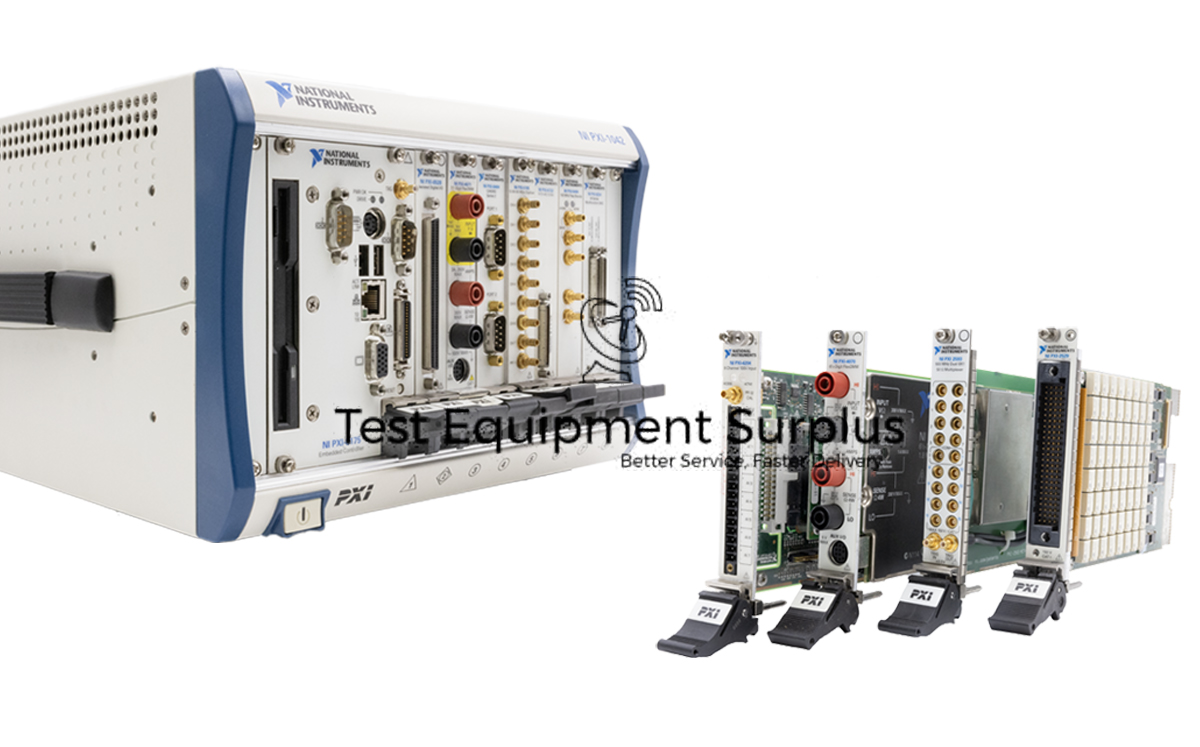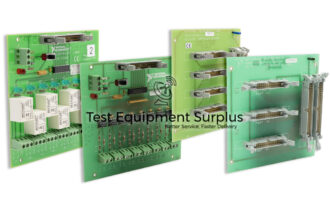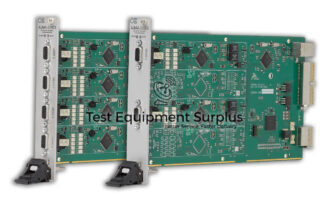Description
The National Instruments PXI-7813 PXI Digital Reconfigurable I/O Module (Part number: 779362-01) is designed to offer a robust solution with 160 TTL compatible, bidirectional digital I/O channels. These channels operate at I/O logic levels of 3.3 volts and 5 volts, with an output current of 04 mA, and are safeguarded with input overvoltage protection ranging from -0.5 volts to 7 volts.
At the core of the module is a powerful FPGA, specifically a Virtex-II V3000 with 28,672 Flip-Flops, which allows for extensive reconfigurability and is paired with a maximum onboard clock frequency of 40 MHz. The device interfaces with systems via a standard PXI bus connector and offers three DMA channels for efficient data transfer.
Connectivity is facilitated through four 68-pin VHDCI female connectors, ensuring versatile connection options. The PXI-7813 is ideal for applications requiring high-speed signal generation, custom communication protocols, sensor simulation, precise timing and control, as well as HIL testing and bit error rate testing. Despite its obsolete status, as announced by National Instruments, it remains available for purchase and repairs through Apex Waves.
| Feature | Specification |
|---|---|
| Manufacturer | National Instruments |
| Product Name | PXI-7813 PXI Digital Reconfigurable I/O Module |
| Part Number | 779362-01 |
| Digital I/O Channels | 160 (TTL compatible, bidirectional) |
| I/O Logic Levels | 3.3 volts, 5 volts |
| Output Current | 04 mA |
| Input Overvoltage Protection | -0.5 volts to 7 volts |
| FPGA | Virtex-II V3000 with 28,672 Flip-Flops |
| Maximum Onboard Clock Frequency | 40 MHz |
| Bus Connector | PXI |
| Number of DMA Channels | Three |
| Connector Type | Four 68-pin VHDCI female |
| Applications | High-speed signal generation, custom communication protocols, sensor simulation, precise timing and control, HIL testing, bit error rate testing |
| Obsolete Status | Announced by National Instruments, available for purchase and repairs by Apex Waves |
Question 1: How does the National Instruments PXI-7813 PXI Digital Reconfigurable I/O Module’s input overvoltage protection range support its compatibility with various logic levels?
Answer 1: The National Instruments PXI-7813 PXI Digital Reconfigurable I/O Module’s input overvoltage protection range, extending from -0.5 volts to 7 volts, supports its compatibility with various logic levels by ensuring that the module can safely handle unexpected voltage spikes or fluctuations within this range, thus protecting the integrity of the 3.3 and 5 volts TTL compatible I/O channels.
Question 2: What are the voltage levels and output current specifications for the I/O channels on the National Instruments PXI-7813 PXI Digital Reconfigurable I/O Module?
Answer 2: The I/O channels on the National Instruments PXI-7813 PXI Digital Reconfigurable I/O Module operate at logic levels of 3.3 volts and 5 volts, with an output current specification of 04 mA.
Question 3: What is the specified output current and input overvoltage protection range for the National Instruments PXI-7813 PXI Digital Reconfigurable I/O Module’s TTL compatible digital I/O channels?
Answer 3: The TTL compatible digital I/O channels of the National Instruments PXI-7813 PXI Digital Reconfigurable I/O Module operate at I/O logic levels of 3.3 volts and 5 volts, with an output current of 4 mA.
Question 4: What are the voltage levels and output current specifications for the TTL compatible digital I/O channels of the National Instruments PXI-7813 PXI Digital Reconfigurable I/O Module?
Answer 4: The specified output current for the National Instruments PXI-7813 PXI Digital Reconfigurable I/O Module’s TTL compatible digital I/O channels is 4 mA, and the input overvoltage protection range is from -0.5 volts to 7 volts.
Question 5: What are the voltage input protection ranges for the National Instruments PXI-7813 PXI Digital Reconfigurable I/O Module, and which FPGA model serves as its core for reconfigurability?
Answer 5: The voltage input protection ranges for the National Instruments PXI-7813 PXI Digital Reconfigurable I/O Module span from -0.5 volts to 7 volts, and it utilizes a Virtex-II V3000 FPGA at its core for reconfigurability.





